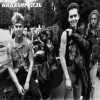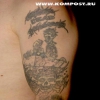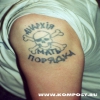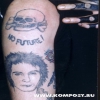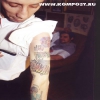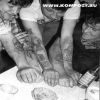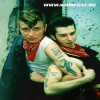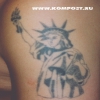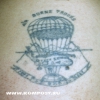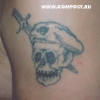

Tattoo
|
The Soviet tattoo, which got its informal development in the criminal and prison environment, remained unshakeable in its state until the mid-80s. But with the emergence of the new wave subcultures, the situation on this front changed rapidly, and appeared the first tattooists of the music lover environment who started to use not only new symbols, but also color ink. Rowdy and rebellious motivation, as well as an attempt to identify the "non-Sovietness" through tattoo, spawned a new music lover direction. The demand and some glamor of this phenomenon got recognition in the sub-cultural environment and this was the starting point for the emergence of new artistic and bourgeois tattoo, as it was before the Soviet Union. Initially, not having any other roots and informants except in the criminal environment, communication exchanged experiences with representatives of the prison environment, but since the late '80s through the magazine and video production and process their skills began to develop independently and competitively compared to the less technically-enhanced approaches of Soviet times. The process developed rapidly, and by the time of the collapse of the Soviet Union, local tattooists had already been equipped with foreign and local information like that, technically equipped and appeared first home studios, which were the prototypes of the new tattoo communication. |

